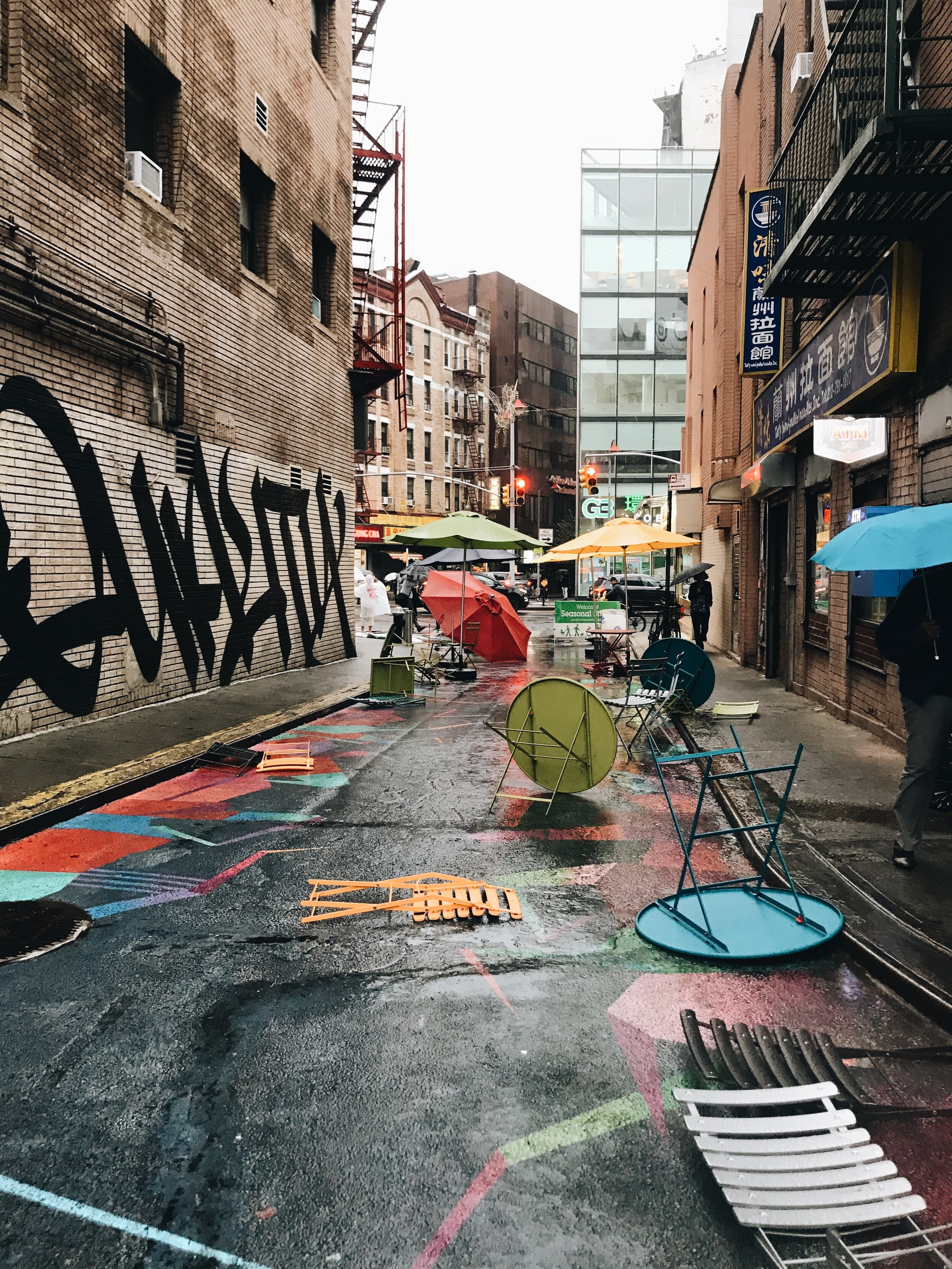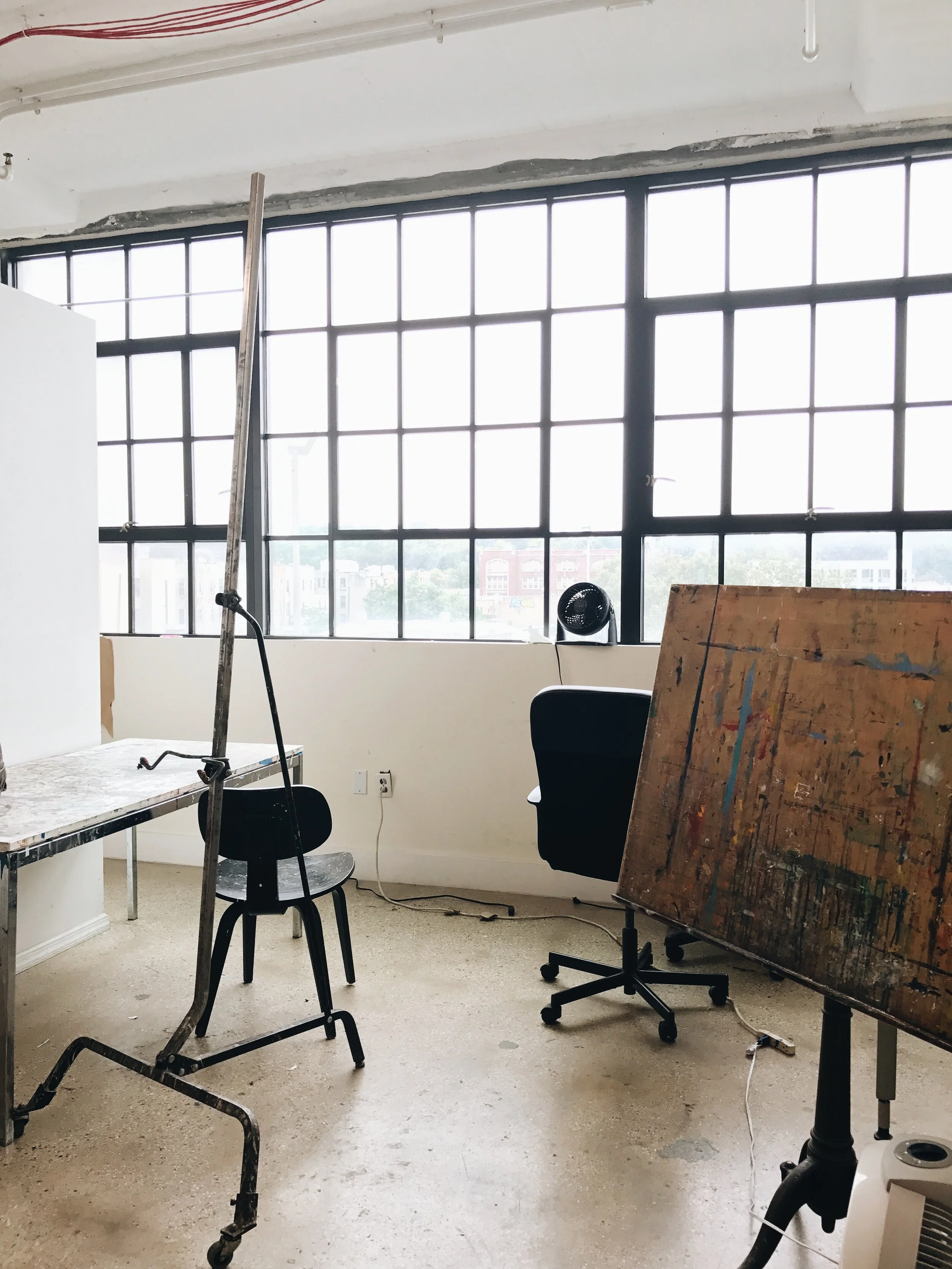How Has the Pandemic Affected New York City Artists?
“I lost access to my studio and was thoroughly lost.” Canal Street News student journalist Jiahe Wang interviews three creatives to see how they are coping at home during the coronavirus pandemic.
When the COVID-19 crisis struck, I was in the midst of preparing a visual arts portfolio, in hopes of being admitted to prestigious art schools such as Rhode Island School of Design (RISD) and Parsons School of Design at The New School.
I had dreamed about immersing myself in a small community for four years, working nonstop on design blueprints and voluntarily being deprived of sleep. I registered for art classes and had my own studio space, where I worked day and night on massive charcoal drawings, linoleum prints, and clay sculptures. However, all of that was suddenly taken away from me when New York announced its lockdown starting March. I lost access to my studio and was thoroughly lost. I seemed to see my dream burst in front of my eyes. How was I going to make large-scale sculptures in my tiny apartment? How would I get art supplies after the stores have closed? How was I going to receive guidance from my art teacher?
However, to my surprise, I soon adapted to my new life in quarantine. I was able to make-do, using my kitchen as a makeshift studio, making life-size altarpieces out of cardboard, and participating in group shows virtually instead of online. Through this period of forced experimentation, I was able to discover my new affinity for using recycled materials in my art. I realized how much I enjoyed the tactile aspect of art-making and paid more attention to the intersection of crafts and art. And as a teen assistant tee curator of a teen group art show that was scheduled to take place in April, I learned how to collaborate through online platforms and adapt to this new mode of working.
This leads me to wonder what other artists are doing nowadays to continue their artistic practice. As many of them are freelancers in New York City, they have been impacted by the pandemic and were forced to change their workflow and adapt quickly. I have invited three artists to share their own stories and advice, hoping that they’ll be of help to other creatives in the city. Some have changed their art styles to reflect the new normal while others remained truthful to their original practices. Some see this pandemic as an obstacle to their art while others see it as an opportunity. Either way, their insights are invaluable and we can all learn something from their stories. —Jiahe Wang
FAHIM RAHMAN
High school senior planning to major in animation and graphic design
Jiahe Wang: How has your relationship with your art changed?
Fahim Rahman: One thing that I wholly expected to do during quarantine was make art. I thought I would have more free time compared to when I had school and got home at 9. But what I didn’t expect was how much my motivation would have plummeted during quarantine. Where usually I would do a little bit of art every day, quarantine has been full of these bursts of art making hours at a time followed by days or weeks of nothing. It was quite jarring to have the urge to create at 3 am and I would spend the rest of the night making art. I have made art that I’ve been proud of, but I just feel like I could’ve been so much more productive. The quarantine itself is just mentally tiring.
JW: Many artists moved to NYC specifically for the easy access to galleries and museums; now, with those things gone, what is NYC good for?
FR: NYC is huge and diverse, so the people and their cultures are a huge aspect of what inspires me. All these artists in New York will still be here, so why not learn from them? For example many people share stories about their experiences in quarantine online, and I’ve been reading a lot about those. Culture is also really what inspires me the most in my art, and New York is honestly the perfect place for artists to be inspired by that. Even though we haven’t been able to go outside much, exploring the pockets of New York culture and other people’s in the city is a great way for artists to be inspired.
JW: How are you making a living and what resources are you making use of?
FR: I’ve had an internship at the Whitney Museum throughout the year that has been derailed by quarantine, and it has been mostly zoom meetings. I’m a student, so I didn’t really have the time to focus on jobs, but being able to work from home was helpful. Whitney also helped me connect to other programs. Even though the museum is closed, many museums still provide programs to learn about the arts. It was fun to talk to other artists going through the same experiences.
JW: Has your art changed to reflect the COVID-19 crisis/current events? If so, how?
FR: One thing I have been focusing on recently is people, and COVID-19/current events focus a lot on people. People are dying, people are protesting, people are victims of sexual assault. There is so much potential to create art about how these people navigate the world, and as a result I’ve been creating stories based on these people as well.
JW: If you could go back in time, what advice would you give yourself at the beginning of the quarantine?
FR: I really wish I would’ve told myself to keep creating as much as I could, even if it’s something for the first time. Even though we are mostly stuck inside, quarantine is the perfect time to take advantage of things you want to explore and pursue. Learn a new art style, use a new program, etc. I am pretty sad how I didn’t do as much as I could’ve during quarantine, but with all that’s been going on in the world, I’m happy I did at all. I just need to keep pushing that feeling.
NOAH GREENE
Ceramic artist and art teacher
Jiahe Wang: How has your relationship with your art changed?
Noah Greene: Overall, COVID has made me re-examine how I utilize my resources. I was always a rather frivolous spender when it came to materials but with the lack of new clay and raw material shipments, I had to see this as a fun opportunity to be more creative with how to use what I had already on hand.
JW: Many artists moved to NYC specifically for the easy access to galleries and museums; now, with those things gone, what is NYC good for?
NG: Having grown up in NYC, I believe if you came just for the galleries and museums you’re really missing the heartbeat of the city and therefore the source of creativity. I think you’ll find more amazing art inspiration roaming the subways than you probably can in the stuffy gallery spaces. We can’t forget that museums and galleries are elitist spaces, and aren’t necessarily a good example of the art community as a whole. Look instead for studio open houses and visit the artists directly in their spaces!
JW: How are you making a living and what resources are you making use of?
NG: Well, as an emerging artist it would be impossible to make a living solely on my art. So I teach as a primary source of income and enjoy picking up small gigs that seem interesting along the way. I’d say I sell only 1 or 2 artworks every few months which is always welcome.
Never stick your nose up at opportunities to make money. I’ve been enjoying picking up tasks on task rabbit. It’s an easy source of income.
JW: Has your art changed to reflect the COVID-19 crisis/current events? If so, how?
NG: I’d say no. I think COVID simply brought issues that were already happening more front and center. My work is centered primarily on the LGBTQ community which is hard hit by society in general, and which already lacks shelter, food and money security. These things just became more “seen” now with COVID and I expect they will go back to being “unseen” when life for most people goes back to normal.
JW: If you could go back in time, what advice would you give yourself at the beginning of the quarantine?
NG: Apply for partial unemployment sooner.
Independent artists are losing access to their studios in the city because of safety concerns and inability to pay rent during the pandemic. Photo by Alexandria Misch
RUIHAN LI
Industrial design student at RISD
Jiahe Wang: How has your relationship with your art changed?
Ruihan Li: I think my relationship with art didn’t change that much, but I've been doing a lot more digital projects than before. When I was back in school, I did physical designs and prototyping [the] majority of the time, but now I’ve started to do more UIUX projects, and also been taking a coding class to make visual arts with coding language such as processing and p5. I think I’m just taking this time to do a lot of not necessarily “art”, but still”art-related” stuff, like I’m also taking a Harvard business class, I don’t think it’s directly related to my major, but in the long run [I’ll] benefit [from] it.
JW: How are you making a living and what resources are you making use of?
RL: I’m not making a living right now. [Laughs.]
JW: Has your art changed to reflect the COVID-19 crisis/current events? If so, how?
RL: I have done several projects in relationship to COVID and especially about the isolation and how people connect during this time. It does open up a lot of opportunities for design, and a lot of great conversations on how we should reimagine the world and adjust to the new normal.
JW: If you could go back in time, what advice would you give yourself at the beginning of the quarantine?
RL: I actually don’t think I have any advice, because I think I’m still going through the quarantine in a way that I’m still learning how to cope with it everyday.


